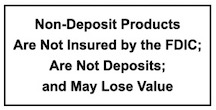Supporting Ukraine
Acts of compassion and generosity can make a significant difference in humanitarian emergencies. If you’re looking to support people affected by the war in Ukraine, be careful to avoid fraudulent links or websites trying to take advantage of your good nature. There are many top-rated charities supporting Ukraine, we’ll share a couple in this post, however, before you decide which organization to donate to, please visit their official web page and make sure they are an established nonprofit.
American Red Cross: https://www.redcross.org/donations/ways-to-donate.html
United Way: https://secure.unitedway.org/a/unitedforukraine
Avoid Charity Scams
Avoid charity frauds by keeping these tips in mind before making donations and contributions.
Visit the Charity’s Official Website
When encouraged to donate by a social media post, direct mail letter, telemarketing call, or other fundraiser, remember to think about the cause or end recipient of your donation rather than the person or company asking for it. The fact that the charity is legitimate does not imply that the individual requesting the money is. Instead of clicking on a third-party donation link, open a new browser and go to the charity’s official website’s donation page directly. Getting rid of the superfluous middleman will almost certainly mean:
- Fewer fees will eat into your donation before it gets to the charity.
- Rather than being kept by a third-party for eventual transmission to the charity, your donation will be received instantly by the organization.
- Scammers won’t be able to take advantage of your generosity.
- You are disclosing your personal information to fewer people, reducing your chance of identity theft or having your information shared with firms who may exploit it to spam you with advertisements and solicit new donations.
Be Careful about Crowdfunding
Giving money to a cause through a crowdfunding website is similar to handing cash to a stranger on the street. Unlike registered charities, which are obliged to file articles of incorporation, bylaws, tax exemption applications, annual IRS tax reporting, and state solicitation filings, crowdfunding campaigns are typically run by individuals who are not required to provide public financial reports. There are numerous examples of scammers using crowdfunding platforms to divert funds away from people and organizations with real needs and funnel them to themselves.
- Skip crowdfunding campaigns and donate directly to the nonprofit on its official website.
- Or search for financially efficient registered organizations that have a history of doing good work in similar crises and donate to them.
- Donate at your own risk if you are moved by the plight of an individual or family seeking funds to help with medical bills or other personal expenses. You could be assisting a desperate family or lining the pockets of a con artist. There is almost never a way to tell for sure. If you do decide to take a chance and donate to a person, be sure you’re on the individual’s or family’s actual campaign page, not a copycat one set up by a fraudster in the aftermath of a tragedy to confuse donors and siphon them away.
Control Emotions
Nonprofits may employ dramatic imagery and painful stories to elicit empathy and inspire you to donate instantly, generously, and frequently. While it’s fine to let your emotions drive your giving, it’s critical to think with your mind rather than your heart when it comes to making a donation. The capacity of a charity to post sad images, tell sad stories, or provide a few anecdotal examples of people it has benefited tells you nothing about how well it is run as a whole or whether it is even a legitimate organization.
Instead of making a spontaneous donation in response to an emotional plea for help, plan beforehand. Consider how much you can afford to give to charity each year, think about which causes are important to you, and then look for efficient and responsible charities operating in those areas that run the programs you want to support and have a track record of making a difference.

